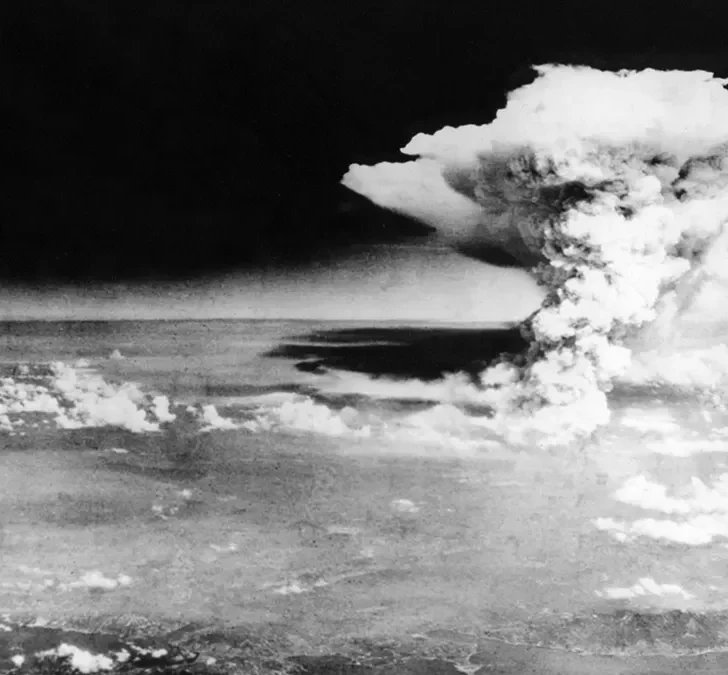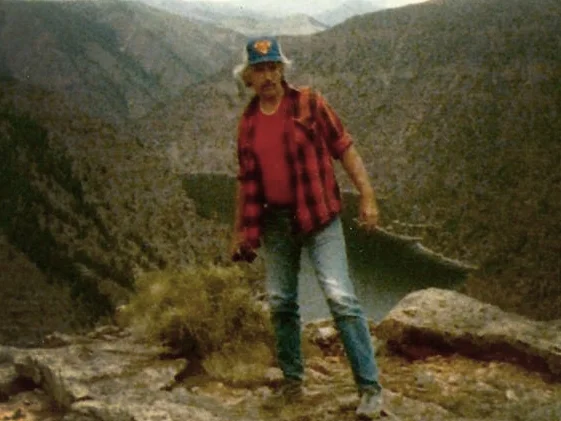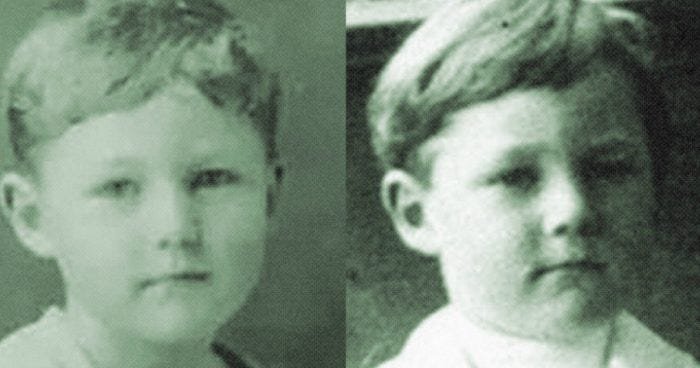Space may be the final frontier, but scientists know just as little about the depths of the ocean as they do about the depths of space.
But that has not stopped people from sailing across the open sea for thousands of years.


The ocean has always been a tantalizing mystery to mankind. Only a small group of people can tolerate the hardships of sailing, but those who do love the open sea.
What deters many is the fear of being lost at sea, trapped alone in a vast expanse of water. This is a reasonable fear since there are many tales of sailors being stranded after their ships sink.
Yet humans are resilient, and even those who are left afloat do their best to survive.
One of the most notable examples of a stranded sailor is the tale of Steven Callahan.
Callahan is an American sailor, naval architect, and now author who has dedicated his life to his love of the sea.
That love once led him to spend 76 days adrift in the Atlantic Ocean, trapped on a small raft after his boat sank.
He later wrote a book documenting his resilience, “Adrift: Seventy-Six Days Lost at Sea,” which was widely read for the way it captured the human spirit to survive.
Early Life And Love For The Sea
Steven Callahan was born on February 6, 1952, in Unionville, Connecticut. Even as a child he loved the ocean.
He spent his early years on sailing trips with his family, learning about the ocean, including its mysteries and its dangers. By the time he was an adult, sailing had become a core part of who Callahan was.
His love for the sea evolved into a career as he sharpened his technical skills and became a naval architect.
Familiar with the common struggles boats faced on the open sea, he was able to design new vessels that directly served the needs of sailors.

Callahan continued to sail regularly, often taking long voyages on boats he had constructed himself. This helped to inform his work as an architect.
He currently holds three patents for maritime devices, including a boat stability device and two models of foldable boats that were informed by his experience lost at sea.
By the early 1980s, Callahan was a known expert and had a reputation as an adventurer.
It was at this point that he decided to tackle an extreme challenge: a solo transatlantic voyage in a boat he had constructed. Unfortunately for Callahan, his risk would be met with disaster.
Setting Sail: A Successful Early Voyage
In 1981, Callahan built a small sloop which he named Napoleon Solo. The name was inspired by the character from the series “The Man from U.N.C.L.E.” which Callahan had grown up watching.
At only 21.5 feet long, it was a small vessel that was meticulously designed to withstand the rigors of transatlantic travel.
Callahan, exercising his expertise from a lifetime of sailing, filled the vessel with all of the equipment he would need for a long voyage.
He included food and water, navigation equipment, and safety equipment to mitigate potential issues.
Callahan’s plan was to sail from Newport, Rhode Island, to England, and then continue to the Caribbean. The journey was ambitious for a self-constructed vessel, but Callahan was confident in his abilities.
He completed the first leg of his journey with ease, and after completing a boat race in England, he sailed to Spain. From here, he plotted his course back to the Western Hemisphere.
In January 1982, Callahan set sail from the Canary Islands, off the coast of Africa, heading westward toward the Caribbean.
At first, the trip was easy, with calm seas and favorable winds that sped him across the ocean. But a month into the journey, things went terribly wrong.
Napoleon Solo Goes Down
On the night of February 4, 1982, Napoleon Solo was hit by a violent storm. Callahan navigated the worst of the storm, but as he recovered, the boat collided with an unidentified object.
Possibly a whale or some kind of submerged object thrown about by the storm, the object caused Napoleon Solo to rapidly take on water.
Callahan tried as best he could to bail out the water, but it quickly became clear the boat would go down. He scrambled to gather as much equipment as he could, setting up an inflatable life raft to abandon his boat for.
Before Napoleon Solo completely sank, Callahan recovered an emergency survival kit, a spear gun, flares, food, and water. He also recovered solar stills, a device that made seawater drinkable, and a copy of “The Sea Survival Manual.”
And so, Callahan was left afloat in the middle of the Atlantic ocean on a small raft with very little to survive, and nearly no hope of rescue. But he did not lose hope; instead, he set to work on surviving the best he could.
Seventy-Six Days Adrift
From February 5 to April 21, Callahan was left alone on his raft. The key to his survival was the miniature ecosystem that he constructed during that time that ensured he had enough food and water to live.
Callahan learned how to set up his solar still by destroying one of the three he recovered, and quickly set up the other two. They only collected about a pint of water a day, so Callahan was sure to cherish each drop he could.
Obtaining food was equally as difficult. While the spear gun helped Callahan to secure a few fish, its use also attracted sharks.
As an alternative, Callahan caught and ate small flying fish that landed on the raft and barnacles he found attached to its bottom.
While not ideal, eating raw fish and barnacles was better than starving to death. But these meager portions were barely enough, and Callahan often went days without food, leaving him weak.
While he struggled to remain physically healthy, Callahan also had to deal with the psychological toll of his isolation.
While he was alone sailing the ocean before, Callahan now was isolated with no way to communicate with the broader world. With almost no hope of rescue, he was forced to process his fear and anxiety on a daily basis.
To keep from spiraling, Callahan created a daily routine and stuck to it for structure. He worked out, read “The Sea Surviving Manual,” and kept a journal of his experiences.
The consistency kept him from going insane, and the notes he recorded acted both as a therapeutic technique and, later, a source for his autobiographical tale.
Other sea-based disasters continuously struck as well. The raft was repeatedly damaged by sharks and storms, forcing him to make constant repairs with very limited materials.
At one point, he was forced to use a hand pump to keep the raft afloat after a shark punctured it. Yet Callahan refused to give up, resiliently finding new solutions to each problem.
Rescue and Aftermath: A New Lease On Life
On April 21, 1982, after 76 days adrift, Steven Callahan was finally rescued by a group of fishermen off the coast of Marie-Galante, a small island in the Caribbean.

By the time he was found, Callahan had lost a third of his body weight and was severely dehydrated. But, he had impressively survived the ordeal and spent the next six weeks recovering in the hospital.
Although the experience physically and psychologically scarred him, Callahan felt a renewed appreciation for his life and still loved the ocean.
He gathered his notes and decided to write a book detailing his time on the raft. “Adrift: Seventy-Six Days Lost at Sea” spent 36 weeks on the New York Times Bestseller list, intriguing thousands with the harrowing tale of survival at sea.
Steven Callahan’s Legacy: Sharing The Tale Of The Sea
Callahan returned to his career as a naval architect, improving on his previous design of the boat, which had left him stranded in the ocean.
Twenty years later, Callahan was approached as a consultant for the film adaptation of Yann Martel’s novel “Life of Pi,” which depicts a young man stranded at sea.
Callahan was able to provide unique insight into the realities of being alone on a raft, providing depth to the character of Pi.
In 2024, a new documentary called 76 Days Adrift was released that documents Callahan’s story. Callahan recreated his experience with all of his original equipment and filmed himself out on the ocean.
The film also includes some 8mm footage that Callahan had maintained during his original journey, providing viewers with a glimpse of Callahan’s journey firsthand.
His willingness to return to the same raft in the ocean demonstrates Callahan’s love of the ocean and his resilience in the face of his harrowing experience.
Sources
https://www.npr.org/2013/02/24/172632549/real-life-shipwreck-survivor-helped-life-of-pi-get-lost-at-sea













Leave a comment